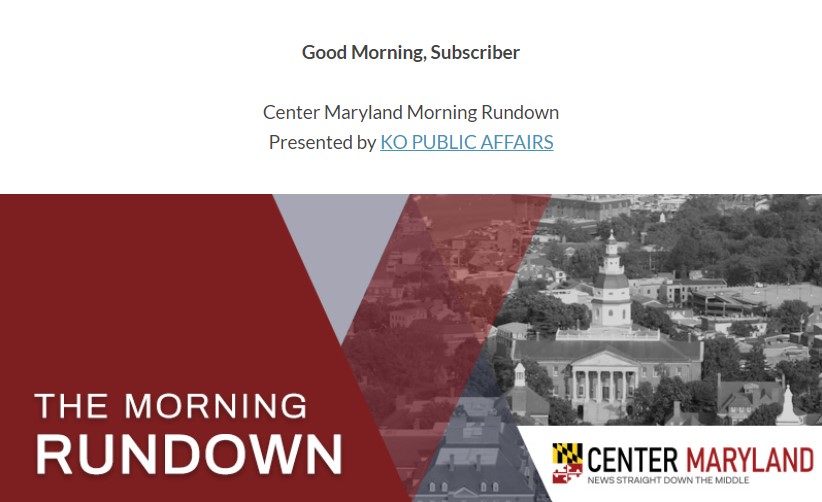The Morning Rundown
We’re staying up to the minute on the issues shaping the future. Join us on the newsletter of choice for Maryland politicos and business leaders. It’s always free to join and never a hassle to leave. See you on the inside.
Like everything else in 2020, our elections had to adapt to the COVID-19 pandemic to ensure people could safely vote. The pandemic has laid bare some of the already existing barriers to voting while also demonstrating some of the smart policies at our disposal to make our elections’ systems more accessible, efficient and secure. Our democracy works best when we all participate, so our state leaders should learn from our experience in 2020 to ensure all eligible voters are able to participate.
Talent is spread evenly across our population — across all genders, races and socioeconomic backgrounds. But opportunity, sadly, is not. How do you ensure that talent meets opportunity? The answer is simple: Invest. Every investor anticipates a return, whether they’re contributing to a 401(k), financing a new business venture or remodeling a kitchen. The same goes for investments in people. We give them our time, our money and ourselves, with the expectation that they use those gifts to produce something meaningful that adds value to our communities.
I note with odd irony an email received one year ago and kept as a kind of souvenir. It was from the Friends of Patuxent Wildlife Research Center and Refuge announcing a lecture entitled “Conserving Insects and What You Can Do To Help,” to be delivered on Saturday, March 7 by Dr. Rebeccah Waterworth, entomologist in the Office of Pesticide Programs at the Environmental Protection Agency. The email arrived with an invitation attached and ended with these words: “The attachment is virus free and safe to open.”
Like many of America’s institutions, art museums have largely left out the contributions of African Americans, women and other people of color, their permanent exhibits generally filled with the works of white men. The racial makeup of the executive staff and boards of these museums traditionally also has been very homogeneous and, therefore, the thinking very white centered. Baltimore’s two largest museums are confronting and acknowledging this one-dimensional past that essentially treated whole populations as if they were invisible and made no contribution to the art world. Baltimore is a city that is more than 60% Black, but those residents couldn’t find much of themselves in its museums even today.
On March 5, 2020, just a year ago, Maryland had its first case of COVID-19. Since then, the pandemic has taken a grim toll on Maryland with over 7,600 confirmed deaths and tens of thousands of people needing to be hospitalized, many of whom will face unknown long-term consequences. While the pandemic has affected all of us, some groups have been hit harder with higher rates of infection and death, including racial and ethnic minorities, the elderly and the poor. We are losing whole generations of people while the virus causes further widening of gaps in life expectancy.
The last year has been an extraordinarily challenging time for our state. The COVID-19 pandemic and resulting economic fallout have wreaked devastating tolls on our families, businesses and local governments. But, as always, Maryland has risen to the moment: Marylanders from east to west have stepped up in this time of crisis, and, as those fortunate to serve this extraordinary state, we have an obligation to do the same. That’s why Maryland Democrats at the state and national level have taken decisive steps to stem the pandemic and provide aid directly to those in need.
As Elizabeth Shwe reported last week in Maryland Matters, an emergency bill introduced by Senate President Bill Ferguson requires a consultant study of the capacity of the Maryland State Department of Education, Maryland Higher Education Commission, the Maryland Department of Labor and other state agencies to carry out the Blueprint for Maryland’s Future. The bill is a commendable step forward. President Ferguson has long been an outspoken critic of the management failures of MSDE, and House leaders share his frustration. And yet, the bill is unlikely to bring much near-term, much less emergency, relief at this unique moment when MSDE’s weak capacity and lack of transparency endanger COVID-19 school recovery and getting the Blueprint off to a strong start.
We’re staying up to the minute on the issues shaping the future. Join us on the newsletter of choice for Maryland politicos and business leaders. It’s always free to join and never a hassle to leave. See you on the inside.
